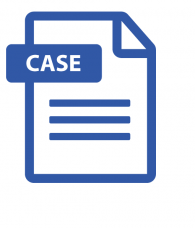We use cookies to make your experience better. To comply with the new e-Privacy directive, we need to ask for your consent to set the cookies. Learn more.
Be.artsy: A Social Entrepreneur's Dilemma in Scaling Women Empowerment
Women's empowerment means empowering women on multiple dimensions: economically, psychologically, socially, and politically. Historically, women have suffered from disproportionately reduced access to resources and opportunities. Financial literacy and inclusion are especially important to overcome the dependence of women on their husbands. This aspect is more important in situations where the husband-wife relationship was strained for a variety of reasons. Shikha Mittal founded Be.artsy to empower women to speak up and manage their finances, with financial literacy and consequent empowerment acting as the impetus for overall women's empowerment. Experiences of sexual harassment at the workplace and domestic violence prompted Mittal to design and offer programs to corporates. These programs aimed to address the above problems through customized training programs for employees of these companies, which comprised Be.artsy's business to business (B2B) markets. Although these programs were supplemented with street plays and interventions in colleges, the B2B channel was the primary channel Be.artsy used to reach out to women; it generated revenue and created an impact. Be.artsy chose financial literacy as the key pillar for women's empowerment and drove its programs through tie-ups with institutions. With the advent of the COVID-19 pandemic, Mittal launched an online program, Be Your Own Lakshmi (BYOL), that imparted financial literacy education. With free initial sessions that demonstrated the importance of financial planning and promotions through social media, BYOL had garnered some traction, with many people wanting to sign up for the paid BYOL offering. However, Mittal's desire to use BYOL as a vehicle to speed up the achievement of her vision of empowering millions of women remained unfulfilled. She needed to choose the right approach to scale BYOL, but the dilemma remained: Should she scale BYOL using the B2B or business to consumer (B2C) route?
Learning Objectives
-
Understand how personal experiences influence starting up a venture and the subsequent entrepreneurial journey
-
Compare B2B and B2C as approaches for start-ups, in the context of Be.artsy
-
Analyze Be.artsy's various scaling-up options.
-
Consider the challenges in scaling up Be.artsy in particular and start-ups in general.

